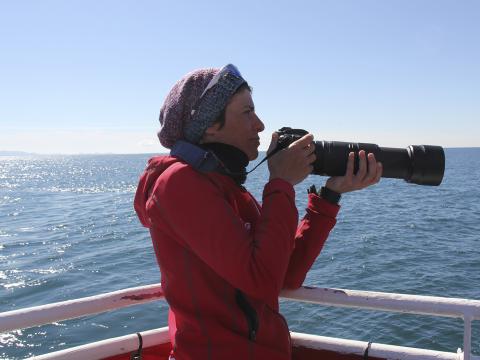
Unlike most mammals, marine mammals cannot rely on vision and smell as their main senses. The vision is compromised under slow physical movement of the water. Therefore, marine mammals have evolved to use sounds and hearing as their primary means of communication and sensing their world. Similar to bats.
Whales emit sounds and use its echo to find their way and to hunt. When hitting an object, the sound waves bounces back, allowing the whale to identify the location, shape, and size of the object. The time it takes the sound to come back, helps them determine the distance. This processes is called echolocation.
The sound is generated in the head and modulated by the melon. The echo passes through a connective tissue that is placed in the lower jawbone of the inner ear.
Although all cetaceans use sound to communicate with each other and to find their ways, baleen whales do not use echolocation. Recent studies have discovered that humpback whales actually produce pulses to locate prey in the dark – a method called “Megapclicks”, this has been observed here in Iceland. How they produce this clicks is still unknown.
By listening to the whales sound, the frequency range and wave form of their clicks, whistles and moans, it is possible to distinguish species. With some species its even possible to identified different individuals with sounds and clicks that have been identified as name calls.
Studies on whales are usually carried out with photo identification, but scientists also use acoustic researches. Acoustic researches enables scientists to keep their research unchanged around the clock as acoustic research does not neet daylight and is not weather dependent. Also, detectability range of an hydrophone it’s much greater than any marine mammal observation and than, acoustic registry, can sometimes confirm whale sighting when photos have not been sufficiently clear.








